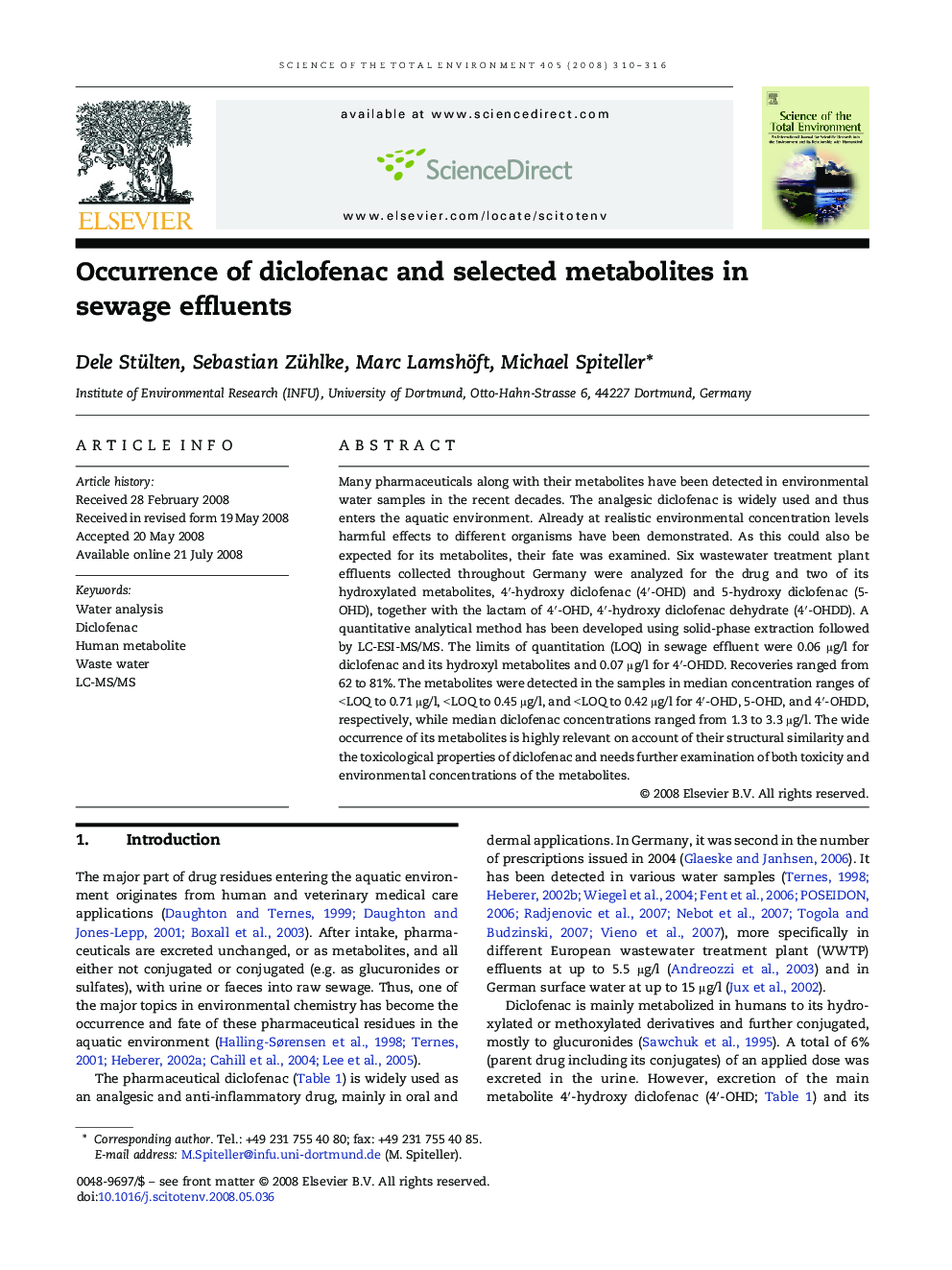| Article ID | Journal | Published Year | Pages | File Type |
|---|---|---|---|---|
| 4432032 | Science of The Total Environment | 2008 | 7 Pages |
Many pharmaceuticals along with their metabolites have been detected in environmental water samples in the recent decades. The analgesic diclofenac is widely used and thus enters the aquatic environment. Already at realistic environmental concentration levels harmful effects to different organisms have been demonstrated. As this could also be expected for its metabolites, their fate was examined. Six wastewater treatment plant effluents collected throughout Germany were analyzed for the drug and two of its hydroxylated metabolites, 4′-hydroxy diclofenac (4′-OHD) and 5-hydroxy diclofenac (5-OHD), together with the lactam of 4′-OHD, 4′-hydroxy diclofenac dehydrate (4′-OHDD). A quantitative analytical method has been developed using solid-phase extraction followed by LC-ESI-MS/MS. The limits of quantitation (LOQ) in sewage effluent were 0.06 μg/l for diclofenac and its hydroxyl metabolites and 0.07 μg/l for 4′-OHDD. Recoveries ranged from 62 to 81%. The metabolites were detected in the samples in median concentration ranges of < LOQ to 0.71 μg/l, < LOQ to 0.45 μg/l, and < LOQ to 0.42 μg/l for 4′-OHD, 5-OHD, and 4′-OHDD, respectively, while median diclofenac concentrations ranged from 1.3 to 3.3 μg/l. The wide occurrence of its metabolites is highly relevant on account of their structural similarity and the toxicological properties of diclofenac and needs further examination of both toxicity and environmental concentrations of the metabolites.
